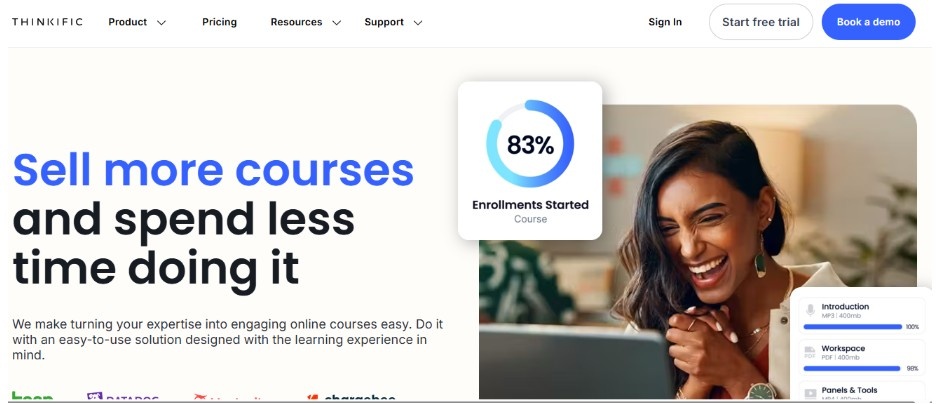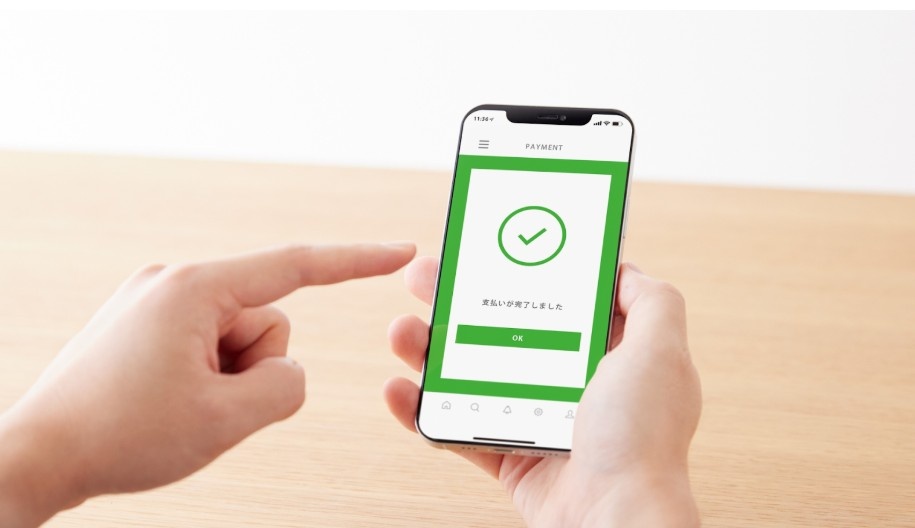Creating an online video course platform is not just a technical challenge; it’s a strategic process that requires careful planning, thoughtful execution, and a deep understanding of your audience’s needs.
Whether you’re a seasoned educator or a new entrepreneur, building a successful online course platform can significantly impact how you reach and engage learners.
In this guide, I’ll walk you through the process of building a powerful online video course platform that delivers engaging, interactive learning experiences and provides you with the tools to grow and scale your offerings.
1. Identify the Purpose of Your Online Video Course Platform

Before diving into development, it’s essential to understand what you want your platform to achieve.
Are you targeting individual learners, schools, or enterprises? What type of content will you deliver? Your platform’s purpose will define its structure, features, and functionality.
Key Considerations:
- Will your platform focus on live courses, on-demand video content, or both?
- Do you want to allow for interactive features like quizzes, discussions, and assignments?
- Will you offer certification or accreditation?
Understanding these goals will help you create a clear vision for your online course platform.
2. Choose the Right Platform Type

Image Credit- thinkific.com
When it comes to building an online course platform, the first decision is which type of platform to use. There are two main approaches to consider:
- Custom-Built Platforms: This is ideal if you want a tailored experience that aligns perfectly with your brand and educational philosophy. However, this option requires significant investment in development and ongoing maintenance.
- LMS (Learning Management System): If you’re looking for a more cost-effective solution with quicker implementation, a pre-existing LMS might be the way to go. Platforms like Thinkific, Teachable, and Open edX® provide comprehensive features for creating and managing online courses with less technical overhead.
Choosing the right platform depends on your technical expertise, budget, and the scale of your course offerings.
3. Design a User-Friendly Interface

User experience (UX) is critical when building an online course platform. The interface should be intuitive and easy to navigate for both instructors and learners.
An appealing, easy-to-use platform can significantly reduce dropout rates and enhance user engagement.
Key Design Elements:
- Navigation: Keep navigation simple and consistent across pages, ensuring users can find courses, lessons, and settings quickly.
- Responsive Design: Make sure your platform is fully optimized for both desktop and mobile users. Today, learners prefer accessing content from various devices.
- Accessibility: Implement features like subtitles, screen reader compatibility, and adjustable text sizes to cater to a wider audience.
Pro Tip: Ensure your platform’s design is clean and visually appealing, using minimalist layouts to help users focus on the learning content.
4. Develop Engaging Video Course Content

The heart of any online video course platform is the content itself. High-quality, engaging video lessons are crucial for keeping learners interested and motivated.
Here’s how to craft compelling video content:
Tips for Creating Engaging Video Content:
- Clear and Concise Videos: Break down your lessons into bite-sized videos that cover one topic at a time. This makes it easier for learners to absorb the material.
- Interactive Elements: Incorporate quizzes, polls, and assignments throughout the course to keep learners engaged and provide valuable feedback.
- Professional Quality: Invest in good audio-visual equipment and editing tools to ensure your videos are clear, crisp, and professional.
Pro Tip: Use a mix of formats—explainer videos, demonstrations, interviews, and animation—to appeal to different learning styles.
5. Integrate Learning Tools and Features

Beyond video content, a successful online video course platform needs to include a variety of features that enhance the learning experience and improve course completion rates.
Must-Have Learning Tools:
- Quizzes and Assessments: These are essential for measuring progress and providing valuable feedback to learners.
- Certificates of Completion: Offering a certificate upon completion motivates students and adds value to the course.
- Discussion Forums: Allow learners to discuss course material, ask questions, and engage with peers.
- Live Sessions: Consider offering live webinars or Q&A sessions to facilitate real-time interaction.
Pro Tip: Integrate gamification features like badges or leaderboards to create a sense of achievement and community among learners.
6. Choose a Monetization Strategy

Once your platform is set up, it’s time to think about how you’ll monetize your courses. There are several options to choose from, depending on your audience and business model.
Popular Monetization Models:
- Subscription-Based: Charge users a recurring fee for access to all courses or exclusive content.
- One-Time Payments: Charge a one-time fee for lifetime access to individual courses.
- Freemium: Offer a free course to attract users, then upsell premium content or certifications.
Pro Tip: Offering tiered pricing options or bundle deals can help cater to different audience segments and maximize revenue.
7. Ensure Scalability and Security

As your platform grows, you’ll need to ensure it can handle increasing traffic and course offerings.
Investing in scalable hosting infrastructure and ensuring robust data security protocols is essential for long-term success.
Key Considerations for Scaling:
- Cloud Hosting: Opt for cloud-based solutions that can automatically scale with your platform’s growth.
- Data Security: Protect user data by complying with regulations such as GDPR and implementing SSL certificates for secure transactions.
Pro Tip: Regularly monitor your platform’s performance and user feedback to make ongoing improvements and optimize the experience.
8. Market Your Platform Effectively

Building a great platform is only half the battle. To ensure your course platform reaches the right audience, you need to invest in marketing and promotion.
Marketing Strategies:
- SEO: Optimize your website for search engines by using relevant keywords like “how to build an online video course platform” in your titles, meta descriptions, and content.
- Social Media: Promote your platform through social media ads, influencer partnerships, and organic posts to attract a wider audience.
- Content Marketing: Create blogs, webinars, and tutorials that demonstrate your expertise and attract potential learners.
Pro Tip: Building an email list and using email marketing campaigns to nurture leads is a great way to increase conversions.
9. Analyze and Improve Your Platform

Once your platform is live, continuously collect feedback from users to identify areas for improvement.
Monitor key metrics, including course completion rates, user satisfaction, and engagement levels, to inform your development efforts.
Tools for Analyzing Performance:
- Google Analytics: Track website traffic, user behavior, and conversion rates.
- User Feedback: Regular surveys and course evaluations can help you pinpoint what’s working and what needs improvement.
Pro Tip: Regularly update course content and platform features to keep your offerings fresh and relevant.
Build, Launch, and Grow Your Online Video Course Platform
Building an online video course platform is a rewarding and multifaceted journey that requires careful planning, execution, and ongoing optimization.
By following the steps outlined above and using the right tools and strategies, you can create a platform that delivers real value to your learners and establishes you as an authority in your field.
Ready to take the leap into the world of online education? Start building your platform today and transform how you deliver knowledge to a global audience!
FAQs
1. How do I make an online video class?
To create an online video class, start by planning your content structure.
Break down your material into manageable lessons, then record your lessons using a high-quality camera and microphone.
Use editing tools to refine the videos, adding visual aids, subtitles, and engaging elements like quizzes.
Finally, upload your content to a platform like Thinkific or Teachable, which will allow you to manage and deliver your video courses effectively.
2. How much does it cost to develop an online learning platform?
The cost of developing an online learning platform varies widely, depending on whether you choose a custom-built solution or use a ready-made Learning Management System (LMS).
Custom platforms can cost between $10,000 to $100,000 or more, depending on the complexity and features.
If you choose an existing platform like Thinkific or Teachable, the setup costs can range from $0 to $300 per month for basic plans, scaling up as you add features or require more customization.
3. How to create an online programming course?
To create an online programming course, focus on clear, step-by-step instructions.
Start by outlining the topics you want to teach, breaking them down into easy-to-digest lessons.
Use screen recording tools like Camtasia or OBS Studio to demonstrate coding exercises and explain key concepts.
Provide downloadable code samples and quizzes for assessment.
Upload your content to an LMS like Udemy or your own platform, ensuring that the course is interactive and includes opportunities for students to practice coding in real time.

